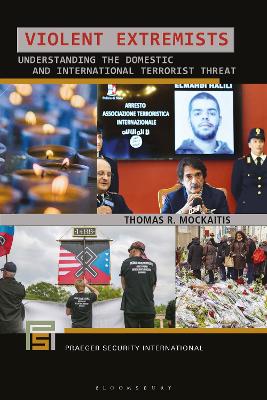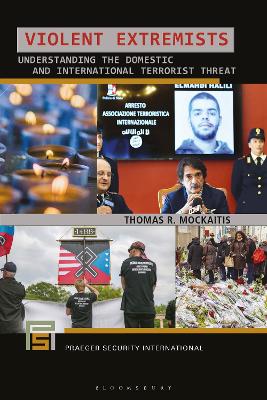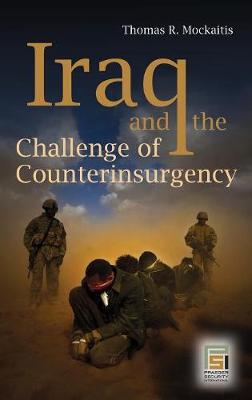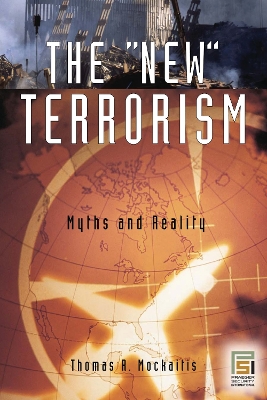Praeger Security International
4 total works
Written for the general reader as well as the professional, this succinct but comprehensive work examines the hybrid nature of the two violent extremist movements threatening the United States: Islamist extremism and white nationalism.
Scholarship as well as popular discourse on terrorism often focuses disproportionately on specific groups without paying sufficient attention to the ideology that motivates them. This book emphasizes understanding and countering the ideology that fuels extremism over preoccupation with specific organizations such as Al Qaeda or ISIS. It sets contemporary terrorist threats in perspective, avoiding fear-mongering and political rhetoric.
The book examines the nature of violent extremism today in all its forms, including lone wolves and cyber threats. Focusing on the threats posed by both international and domestic terrorism, it analyzes each in depth as a multidimensional hybrid phenomenon: each threat exists as an ideology, as distinct groups espousing that ideology, and as a network of followers. Short, easy-to-read chapters take readers through the subject matter in a clear, methodical manner. Written in an accessible style by an author who has studied terrorism for more than 30 years and provided extensive media coverage on the subject, the work is a valuable addition to the literature on violent extremism.
- Provides concise but comprehensive analysis of violent extremism as a hybrid phenomenon
- Focuses on contemporary threats that are of great concern to the United States and other Western powers
- Combines scholarly rigor with an accessible writing style
- Debunks fear and counters myths while avoiding political hype
Violent Extremists: Understanding the Domestic and International Terrorist Threat
by Thomas R Mockaitis
Mockaitis begins by providing a working definition of counterinsurgency that distinguishes it from conventional war while discussing the insurgents' uses of terror as a method to support their broader strategy of gaining control of a country. Insurgent movements, he notes, use terror far more selectively than do terrorist organizations like al-Qaeda, which kills indiscriminately and is more than willing to produce mass casualties. Such methods stand in stark contrast to the American approach to armed conflict, which is more ideally suited to pragmatic culture leery of involvement in protracted foreign wars and demands immediate results. Within this context, Mocktaitis examines the conflict in Iraq, from post conflict troubles with Saddam in the early 1990s, to pre-invasion planning in 2003. He then moves into a discussion of the rise of insurgent movements and the challenges they posed in the aftermath of the fighting, tracing the ongoing efforts to shape a doctrine that allows US forces to successfully deal with the growing insurgency.
The U.S. military in Iraq faces the most complex counterinsurgency campaign in its history and perhaps the history of modern warfare. At the outset, it confronted as many as 22 different domestic insurgent and foreign terrorist groups in an environment made more difficult by thousands of criminals released by Saddam Hussein. Over the past three years, the conflict has evolved with growing ethnic violence complicating an already difficult security situation. Even the most optimistic assessments predict a continued deployment of significant U.S. forces for at least five years for the country to be stabilized. It remains to be seen whether public opinion will support such a deployment. Mockaitis situates the Iraq War in its broad historical and cultural context. He argues that failure to prepare for counterinsurgency in the decades following the end of the Vietnam War left the U.S. military ill equipped to handle irregular warfare in the streets of Baghdad. Lack of preparation and inadequate troop strength led American forces to adopt a conventional approach to unconventional war. Over-reliance on firepower combined with cultural insensitivity to alienate many Iraqis. However, during the first frustrating year of occupation, U.S. forces revised their approach, relearning lessons from past counterinsurgency campaigns and adapting them to the new situation. By the end of 2004, they had developed an effective strategy and tactics but continued to be hampered by troop shortages, compounded by the unreliability of many Iraqi police and military units. The Army's new doctrine, embodied in FM 3-24 Counterinsurgency, outlines the correct approach to winning Iraq. However, three years of desultory conflict amid ongoing revelations that the premises upon which the administration argued the need for invading Iraq may be false have eroded support for the war. The American armed forces may soon find themselves in the unfortunate situation of having found a formula for success at almost the same time the voters demand withdrawal.
As shocking as the attacks of 9/11 were, we have been too quick to view the post-9/11 struggle against terrorism as entirely new and unprecedented. Without denying certain novel aspects of Al Qaeda and its affiliates, the newness of its purpose and methods has been overemphasized. Many aspects of contemporary terrorism bear a striking resemblance to past movements. Others represent the culmination of trends evolving over decades. Even seemingly novel characteristics of terrorist methods may be more the outcome of earlier developments than a truly new phenomenon. The increased lethality of terrorist attacks is a case in point. Usually attributed to lack of restraint brought on by religious extremism, the emphasis on body count may owe as much to a kind of threshold phenomenon. Numbed by decades of violence, people do not shock as easily as they once did. It now takes thousands of deaths to produce the same effect once caused by a relative handful. This book places today's terrorism in historical context and challenges the idea of a global war on terrorism.



